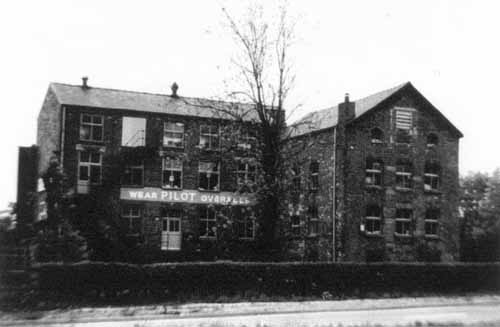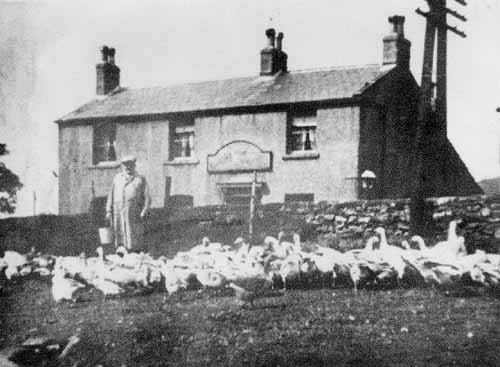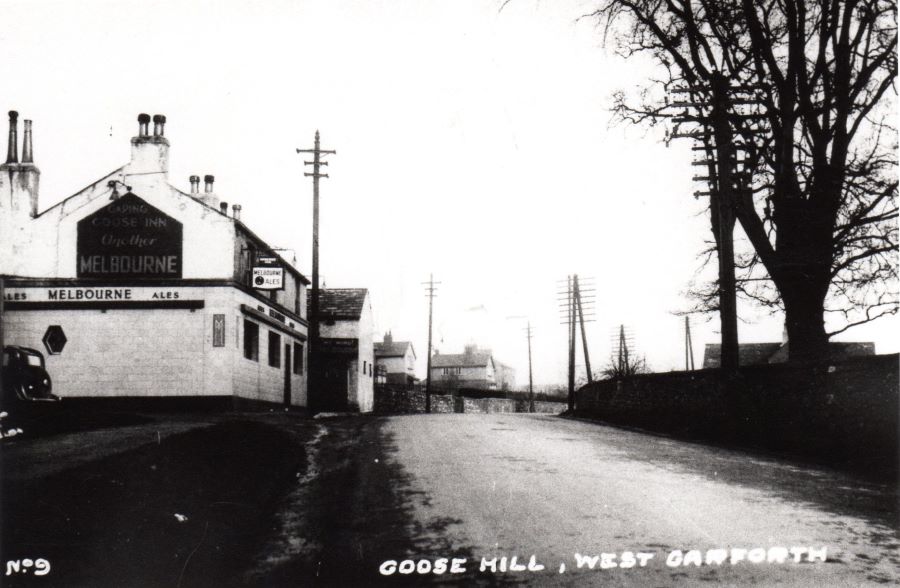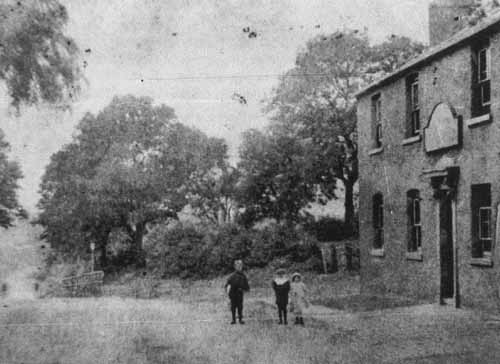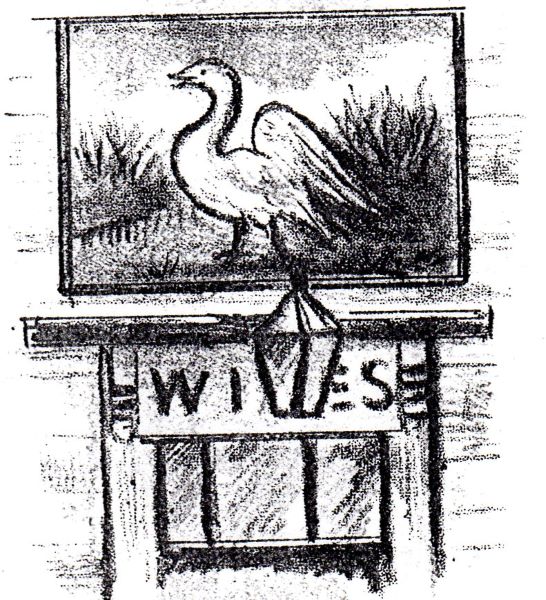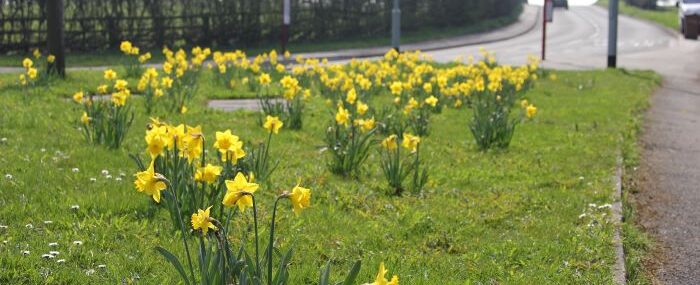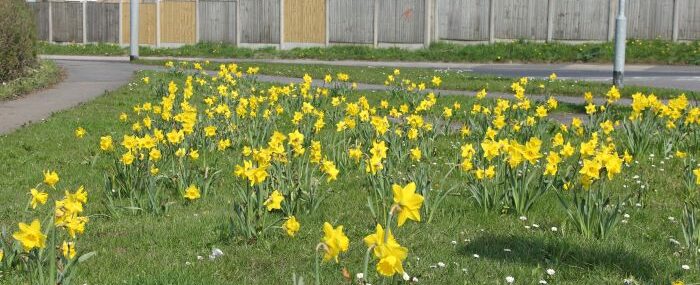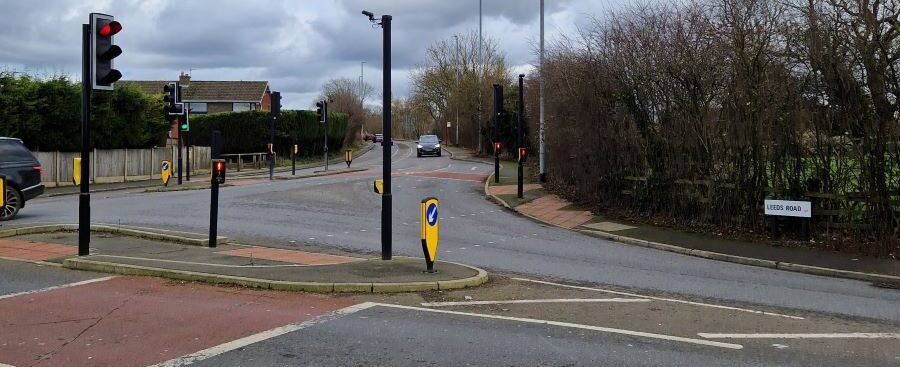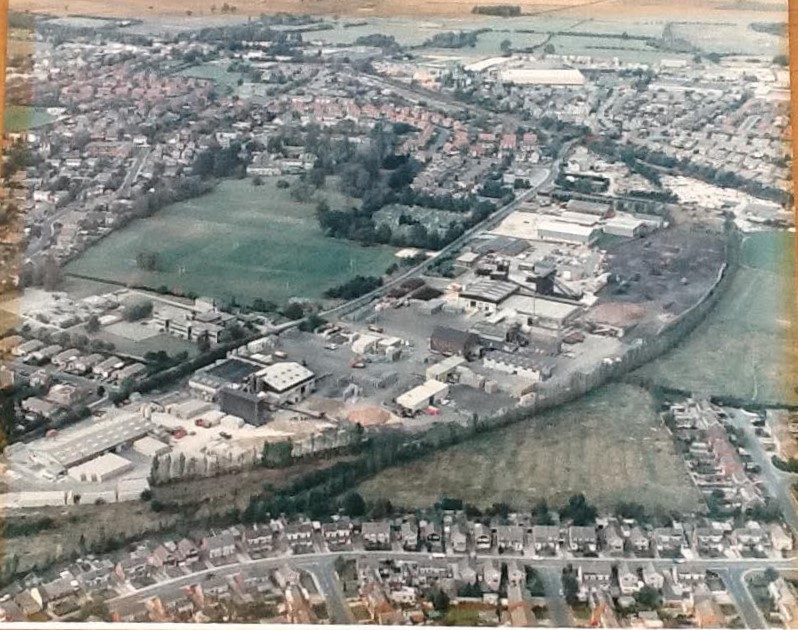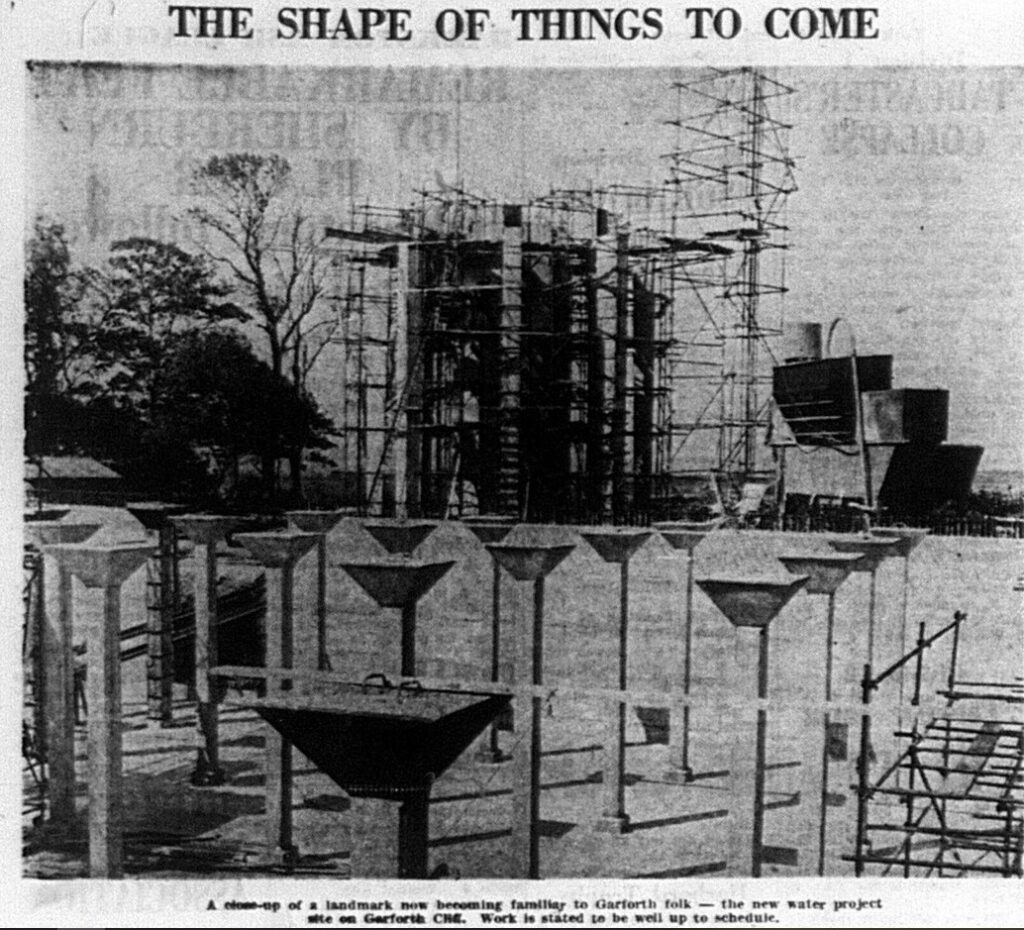Selby Road from the Roundabout (Garforth Bridge) at Miller & Carter to Garforth Cliff
Old George Pub

One of the oldest of Garforth inns. It has a mention in Baines Gazette of 1822. It was a likely a coaching stop on the Leeds to Selby and Wakefield to Tadcaster Turnpikes. Garforth Bridge was at the crossroads under which flowed Sheffield (Sheep Fields) Beck which forms part of the Parish Boundary.
Information from “This Was Garforth” by Garforth Historical Society.
The following is from research done by Ashley Land
“Looking back through the history of the Old George Inn, I could see many publicans listed there, either on censuses or on lists of publicans: Abel Archer in 1871, Richard Smith in 1881, Joseph Scarr until he committed suicide at the Inn, aged 75 on 17th August 1929, Aubert Meakin and Joseph Sykes until 1932, Walter Jackson until 1942 (who would have been interviewed by police in connection with the Saxton Grange murderer, George Brown in 1933), Joseph Barclay Blair until 1944, Leonard Smith until 1952, Alfred Edward Ellaby until 1953, and George Ellaby until 1957. I knew the latter couldn’t be Old George, as there are photos from the 1800’s showing the same name on the pub.
Looking back through really old newspaper articles, it was known as the ‘Old George Inn’ as far back as 15th July 1820. So although it was interesting at least to look at how the Old George Inn and the ‘Old George roundabout’ appeared before the roundabout was built in the late 1960s, I’m sorry to say I’m none the wiser as to who or how old Old George might have been!“
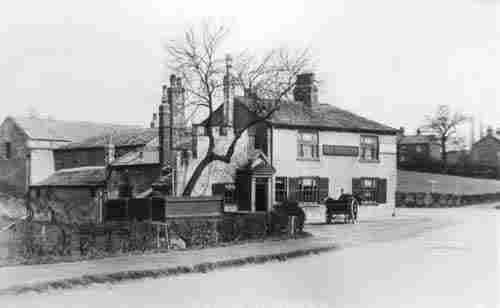
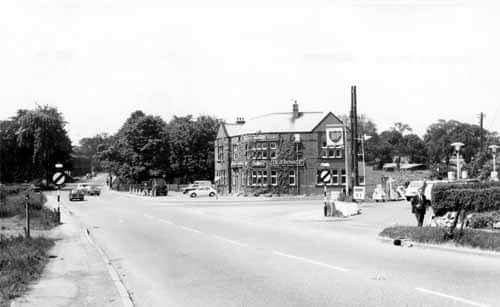
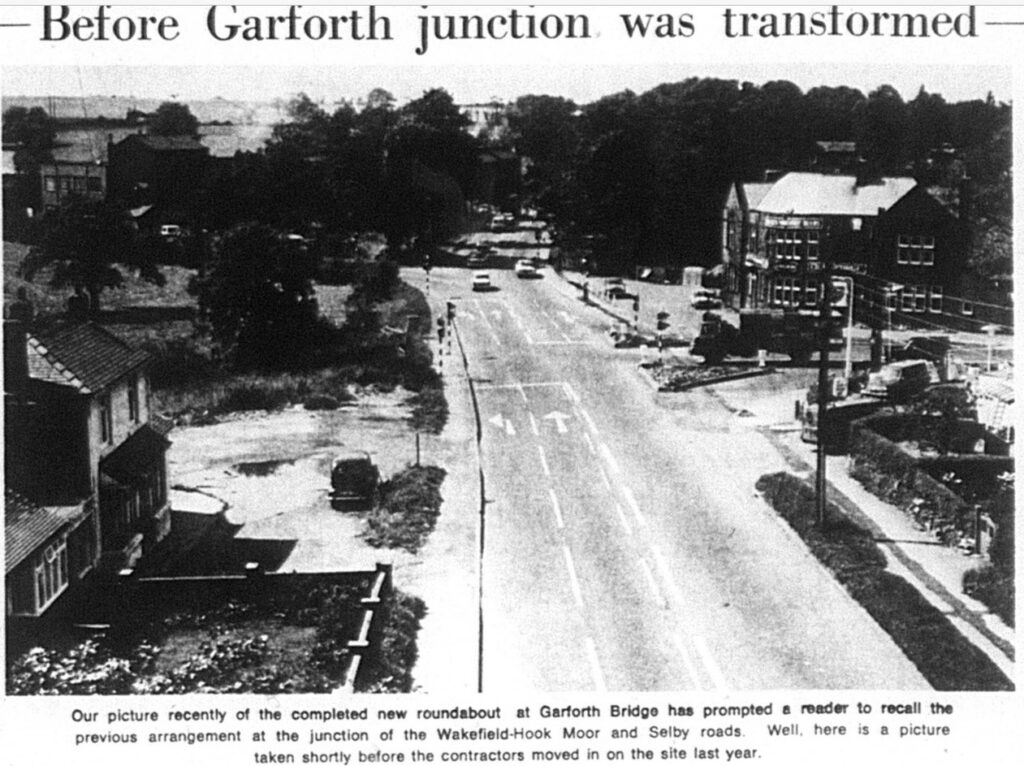


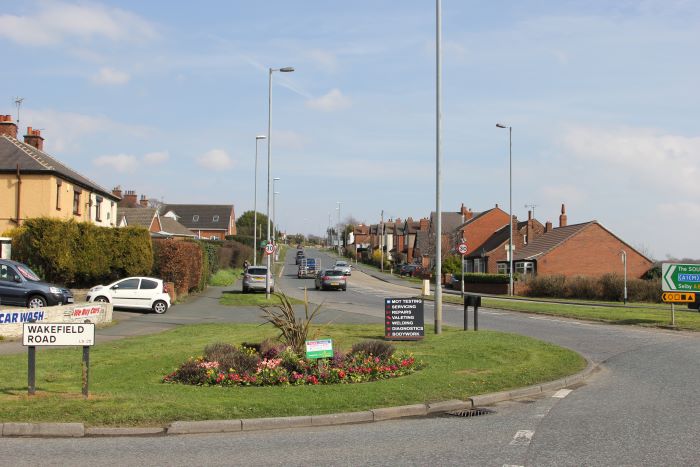
View from Cramby Hill on Wakefield Rd. The Old George and Fittons Garage on the left and The Gaping Goose is in the centre. Bowmans Well Green Farm ,later Lindley’s, on the right is now The Hilton Hotel
Now Miller and Carter
View from The Old George up Selby Rd towards the Gaping Goose
Naylor Pollard Shirt Factory

A Mill at (Garforth Bridge) was first mentioned in a Charter dated 1180, although it thought to have been operated before that. Originally a Corn Mill and probably the site of a windmill referred to in 1566 when Nicholas Gascoigne the purchased 200 acres acres of land of West Garforth. In later years the mill run by the Horsefields. It functioned as a mill until the early 20th century
Information from Manorial Garforth by John I. Rushton
Chas H Robshaw’s who were Est 1865 had a glue factory there . It was also a tannery and occupied by Geo Pitt & Co. Then during WW2 Naylor Pollard made shirts and overalls for pilots. It was source of employment for local women. It is now the site of the Post Office Sorting Depot.
Information from “This Was Garforth” by Garforth Historical Society
The Gaping Goose
Believed to be the oldest pub in Garforth it is situated on Selby Road. It served travellers on the Leeds to Selby Turnpike and the people of West Garforth.
The photograph shows Mr Billy Previll
In 1891 George Denison Lumb, a solicitor living in Leeds, sold the pub for £930 to the Leeds & Wakefield Brewery Co which later became Melbourne Brewery. In the deeds there’s a reference to the inn being called The White Swan or Gaping Goose. In 1878 George’s father, Richard a coal agent , had left the inn to his son together with land known as “The West Ends” – “The Goatlands” and the “South Furlong”.
There are various theories on how the pub was named. Apparently there was a frieze in the Old Hall which featured a cormorant or flamingo which may have been confused with Swan or Goose. A second theory involved the renovation of the White Swan sign by a painter who had a little too much to drink. His hand slipped, changeing the shape of the beak resulting the image resembling a goose more than a swan.
A third story claims that, as the pub is halfway between the ports of Hull and Liverpool, sailors transferring between ships would stop off and indulge themselves in the food and beverages like a greedy cormorant. Its believed that It was sometimes known as The Cormorant. Legend has it that Dick Turpin’s horse, Black Bess, was once shod outside of The White Swan
The following is information on Aquila Morley, a landlord of the pub from the mid 1800s and relates to an article in the Bradford Observer of 27th October 1836. Click to continue reading courtesy of Face Book Page-Garforth Historic News…….
“On Sunday week, Priscilla, fourth daughter of Mr Aquilla Morley, of the Gaping Goose Inn, Garforth.Priscilla had died on the 17th October, she was buried at St Mary’s Garforth on the 19th October”. Aquilla was about 50 at the time of his daughters death. He had ten children in total with his wife Mary, eight girls and two boys. Aquilla had started his professional life as a farmer. It’s not clear when he took on the Gaping Goose, possibly around the mid 1830s.
He was still living at the Gaping Goose in 1841. However by 1851, things had changed. His wife Mary died in April of that year. He had apparently given up the tenancy of the Goose, and was now a farmer again, living with three of his four remaining daughters, Elizabeth and Mary and Eliza, who were all unmarried. Of his ten children, at least six died before him. Aquilla survived until 1858, dying at the age of 72. He is buried at St Marys in Garforth.Two of his daughters, Elizabeth and Mary, disappear from the records after the 1851 census and I have not been able to trace what happened to them. They may have died before him, or moved away from Garforth after his death. His only living son William had moved to Derbyshire to work as a railway clerk. He had many children and married three times .His daughter Martha Jane, married a blacksmith called Samuel Hinchcliffe, also had many children and eventually moved away from Garforth
Garforth Old Hall

The Hall stood almost opposite The Gaping Goose. Originally the centre of West Garforth, it is believed that people moved away and rebuilt the village elsewhere after the outbreak of the plague.
View Looking East along Selby Rd. The Hall is believed to have been built in the 15th century for the Lord of the Manor, Occupants of the Hall have included Joshua Watson in the 1930s and later Mr. Hand who kept pedigree poultry. It was lived in until 1958 after which it was demolished as part of a plan to build a dual carriageway from the Austhorpe Ring Road to the A1 at the Boot & Shoe – this never materialised.
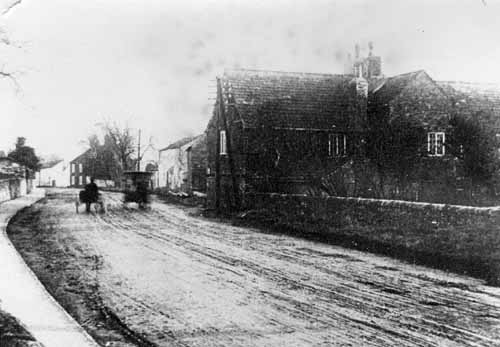
Professor Paul Stanton Commented 28/12/2016
“My family were the last residents of Garforth Old Hall. It stood almost opposite the Gaping Goose public house. It abutted the old Selby-Leeds Road and was compulsorily purchased in 1958 despite my father’s strong objections to make way for a dual carriageway that – as the text correctly identifies – was never built. Some parts of the house -which had been much changed over the centuries – were more than five hundred years old. It was both a tragedy and an act of ‘planning’ savagery
“My father purchased the house from Arthur Catley and his wife. Arthur, who claimed to have served with T. E. Lawrence in Arabia, was from a Romany family. He and his wife continued to occupy some of the land and lived in a static caravan sited there. He kept horses in the paddock, chickens in the yard and used to sell bags of (somewhat dubious and wasp nibbled) apples and pears from the orchard at an impromptu ‘stall’ by the side of the road.
Hawkshaw House

Once owned by T.B. Smith whose large shop was on Main street at the junction of Church Lane. This shop later became Garforth UDC offices. Hawkshaw Ho. had been a boarding school for boys as per the 1871 census. At this time there were 15 pupils including one from Australia. The house was demolished and several houses built on the site. One in particular, Leyland House, is a large, spectacular home.
Colin Smith in 2016 recalls:-
“I went to Miss Merry’s School here from 1956 to 1958. The house was owned then by a Mr and Mrs Bennett. Later Barbara Bennett used to let the NSPCC have the big field (where the new Leylands stands for the Annual Fete and Fancy dress party.”
Charlie Sweeps Corner

Charles Dodsworth – Chimney Sweep 1851-1925
The junction of A63 Selby Road and Leeds Road was named after Charles Dodsworth, a chimney Sweep who lived in a house on land behind the Leeds Road sign.Charles Dodsworth – Chimney Sweep Living at Kippax Lane end – born 1851 in Bedale
- 1871 Listed as 20 year old servant for a farmer living in Little Langton
- 1875 Married Elizabeth Adamson of Barwick in Aberford PC 25th Nov 1875. He was listed as a Farm Labourer Living in Aberford. They went on to have seven children.
- 1881 Living at Kippax Lane End Listed as Chimney Sweep.
- 1893 Listed in Kellys Directory as Chimney Sweep in West Garforth
- 1911 Living at Kippax Lane End and listed as a Chimney Sweep
- Died 26th Feb 1925 and buried in Garforth Cemetery.

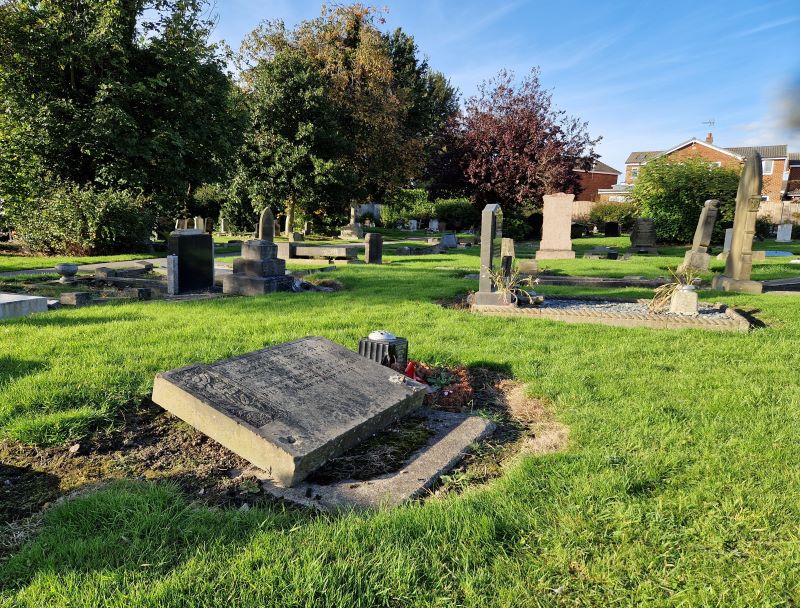
This junction has undergone major improvements over the years. A newspaper article in the YEP on 20th September 1979 reports on “a £36,000 scheme to improve a notorious bottleneck”. It was regarded as a very dangerous junction with tight turns particularly for buses and lorries from Selby Road into Leeds Road. The campaign for change dated back to 1972 when Kippax Conservative Association raised the issue with Garforth UDC during the final years of the council. The scheme, which started in 1979, involved realigning Leeds Road and providing deceleration lanes and bus lay-bys.
Further changes to the junction were made in 2018 when traffic lights were commissionsed on 11th December 2018
Ninelands Lane
Stocks Blocks with the Old Trench Pit building in the centre

Photograph taken by Stuart Clark in 2010- Longmeadows Estate on the left and Wimpey Estate on the right with the Water Tower on the hill on the right.
Water Tower
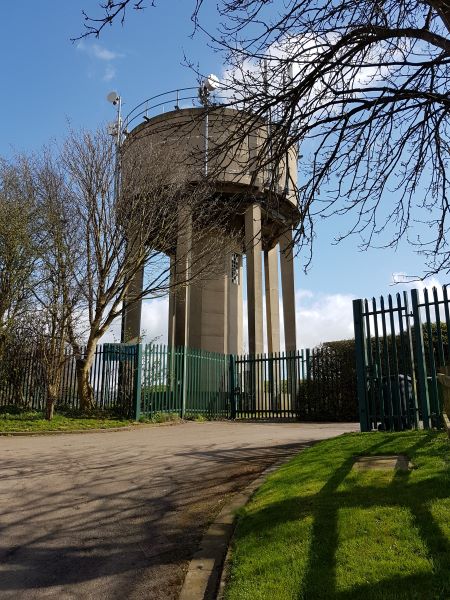
The central working column has 11 sides termed and endecogon. The tank top is circular with a doomed roof. There are eight other columns supporting the tank, all are the same shape and size but much narrower than the central column. The whole structure is made of concrete and is situated on Garforth Cliff,of Selby Road, overlooking the populated areas of Garforth. The tower first came into use in 1960 when water distribution became the responsibility of Leeds Corporation. There are two underground reservoirs next to the tower. On the site were two bungalows for staff and and a control room. The water which serves Garforth initially is taken from the River Derwent and collected at Brayton Barff reservoir. The major portion is diverted to the Sheffield area and the rest piped to the tower in Garforth
Information from documents in Garforth Historical Soc. Archive at Garforth Library




